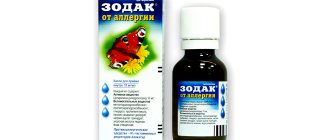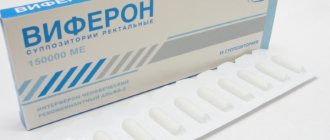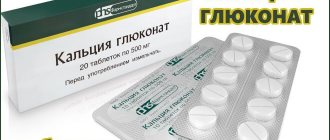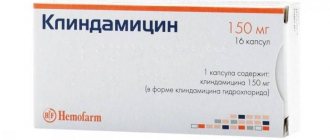Compound
Tetracycline is a broad-spectrum antibiotic. It is effective against various microorganisms, which include:
- streptococci;
- clostridia;
- staphylococci;
- salmonella;
- enterobacteria;
- coli.
The drug suppresses the formation of new bacterial colonies by blocking protein synthesis in their cells. The effect is achieved thanks to the active compound - tetracycline hydrochloride, which is contained in an amount of 0.1 g.
The list of auxiliary connections includes:
- talc;
- starch;
- sucrose;
- calcium stearate;
- gelatin;
- magnesium carbonate.
These are round, slightly convex coated tablets. They are packed in cardboard packs of 20 pieces.
Contraindications
List of absolute contraindications:
- pregnancy (entire period);
- lactation;
- childhood;
- severe liver damage;
- leukopenia;
- mycoses;
- hypersensitivity to components.
In the absence of direct contraindications, the product can be used, but consultation with a doctor is required.
Tetracycline tablets - instructions for use for adults
The antibiotic is taken orally in tablet form. The drug is swallowed without chewing and washed down with a small amount of water. It is not recommended to replace liquid with other drinks - tea, juices, milk. This will affect the rate of absorption of the medication.
To maintain optimal drug concentrations, it is necessary to maintain an interval between tablet doses. So, for adult patients it is 6-8 hours.
The dosage for an adult varies depending on the nature of the disease and ranges from 200 to 500 mg.
| Disease | Single dosage | Number of appointments per day (times) | Duration of treatment (days) |
| Genital infections (gonorrhea, syphilis) | 500 mg | 4 | 7-10 |
| Acne | 500-2000 mg | 4 | 21 |
| Intestinal disorders | 250-500 mg | 3-4 | 5-7 |
| Inflammation of the respiratory system | 500 mg | 4 | 7 |
| Cystitis, pyelonephritis | 500 mg | 4 | 7 |
The maximum safe daily dose of the drug is 4 g.
special instructions
During treatment with Tetracycline, direct exposure to sunlight should be limited, as the drug can cause photosensitivity.
During long-term treatment, it is necessary to periodically monitor the function of the liver, kidneys and hematopoietic organs.
Tetracycline can mask the symptoms of syphilis, so if there is a possibility of a mixed infection, a serological test should be performed monthly for 4 months.
It is not recommended to prescribe the drug to children during the period of tooth development, since hypoplasia and irreversible staining of tooth enamel in a yellow-gray-brown color are possible.
In order to prevent hypovitaminosis during treatment with Tetracycline, you should take brewer's yeast and vitamins B and K.
If there is no improvement within a few days, you should consult a doctor.
During treatment with oral forms of Tetracycline, you should refrain from driving or engaging in other potentially hazardous activities.
Tetracycline tablets - instructions for use for children
The antibiotic is included in treatment regimens for children over 8 years of age. The child takes it at intervals of 6 hours in an individual dosage. The amount of tetracycline hydrochloride recommended by pediatricians for children is determined based on body weight. The calculation is based on the formula 12-25 mg per kilogram of weight:
- for acute intestinal infections, infectious pathologies of the gastrointestinal tract - 12-20 mg per kg every 6 hours;
- for inflammation of the urinary organs - 20-25 mg per kg 4 times a day.
So, for acute cystitis, a child who weighs 30 kg should receive 750 mg of medication per day. This volume is divided into 3 doses (250 mg - 2.5 tablets) with an interval of 6 hours.
Pharmacokinetics
Absorption of tetracycline occurs best from the upper digestive tract. Bioavailability more than 70%. If a person has eaten before taking it, the bioavailability will decrease to 50%. When an antibiotic enters the blood, it binds to amino acids - thus tetracycline is transported throughout the organs. The highest content in plasma is created after 2-3 hours. A large mass of the drug is transported into parenchymal tissue. The drug leaves the body along with feces and urine.
Tetracycline tablets - instructions for use for diarrhea
The antibiotic is effective for digestive disorders of a bacterial nature. Such diseases can be caused by:
- salmonella;
- coli;
- pathogenic microorganisms.
For diagnosis, contact a medical facility. Tetracycline tablets are prescribed if the bacterial nature of the disease is established.
Standard dosage:
- 250 mg for mild diarrhea without other associated symptoms;
- 500 mg for frequent diarrhea (more than 4 times a day) against a background of fever, nausea, and abdominal pain.
In the first three days, Tetracycline tablets are taken every 6 hours to stop the proliferation of pathogenic bacteria, then the drug is taken at intervals of 12 hours for another 3-4 days.
The dose of the drug for children depends on their weight. The drug is given at the rate of 12-20 mg per kilogram of weight. The resulting amount is divided into three doses. The medication is approved after 8 years.
When treating diarrhea with Tetracycline, keep in mind that the antibiotic acts exclusively on the bacterial flora. If an unpleasant symptom is caused by a virus, then you will need to choose a different treatment regimen.
Indications
There is a fairly wide range of indications for prescribing Tetracycline orally. It is used as the main therapeutic agent for pathological processes caused by pathogenic sensitive microorganisms, with:
- Inflammatory diseases of the upper and lower respiratory tract: lungs, bronchial tree.
- Purulent, septic lesions of the pleura, endocardium.
- Dysentery caused by bacterial and amoebic infection.
- For the treatment of sore throats of various etiologies, scarlet fever, whooping cough, typhus, relapsing fever, effective against the causative agent of the brucellosis process, tularemia.
- Microbial infectious diseases of the genitourinary tract.
- Inflammatory processes of extrahepatic bile ducts, gallbladder.
- Gonorrhea.
- Purulent meningitis.
- Used to prevent wound infections after surgery.
- Effective against the causative agent of cholera.
Local administration of ointments is indicated for the treatment of:
- Eye infections.
- Phlegmon.
- Mastitis.
- To prevent secondary infection of skin burns.
Against the background of severe septic lesions, Tetracycline is recommended to be used in combination with other antibacterial drugs.
Tetracycline tablets - instructions for use for colds
A cold is usually understood as ARVI. The disease occurs in an acute form and is accompanied by a number of symptoms:
- temperature increase;
- pain in muscle tissue;
- general weakness;
- redness and sore throat;
- runny nose and swelling of the nasopharynx.
However, the use of antibiotics, including Tetracycline tablets, will be erroneous. The listed symptoms develop due to the activity of viruses that are resistant to antimicrobial medications. Colds require powerful antiviral agents and drugs to strengthen the immune system:
- Kagocel. The tablets are suitable for adults and children over three years of age. The child is given 1 tablet three times a day. Adults take 2 tablets 3 times a day. The total duration of treatment is 4 days.
- Anaferon. Adult patients take it according to the following regimen. On the first day, take 5 tablets at intervals of 30 minutes (2 hours). Then take 3 more tablets at intervals of 3 hours. During all subsequent days, drink one tablet three times a day. The total duration is a week. From 1 month to 18 years it is recommended to take children's Anaferon. These are lozenges. On the first day, drink a total of 8 tablets (the first 5 with an interval of 30 minutes, another 3 tablets - 3 hours). From 2 to 7 days of treatment – 1 tablet 3 times a day. For infants, the drug is pre-dissolved in water.
- Ingavirin. Adult patients take one capsule per day (dosage 90 mg), children over 7 years old - 1 capsule per day (dosage 60 mg). The total duration of therapy is 5-7 days.
Pharmacological activity
Tetracycline is a broad-spectrum antibiotic from the tetracycline group. The WHO Model List of Essential Medicines contains information about this antibacterial substance as one of the most important medicinal products. The list was compiled by experts from the World Health Organization.
Tetracycline tablets help against a number of diseases. The bacteriostatic effect is formed due to disruption of the formation of the complex between transport type RNA and the ribosome. The antibiotic helps eliminate gram-positive microorganisms:
- streptococci, in particular penicillinase;
- clostridia.
Gram-negative life forms are also sensitive to the drug. Main representatives: Haemophilus influenzae, Haemophilus ducreyi, Bordetella pertussis, enterobacteria (Escherichia collie).
If the patient cannot tolerate the penicillin series of drugs, tetracycline is offered as an alternative.
Resistant to popular antibacterial agents: Pseudomonas aeruginosa, Proteus spp., Serratia spp., group A streptococci, viruses, fungal invasions.
Tetracycline tablets with nystatin - instructions for use
The Russian company BIOSINTEZ produces a combined product with two active substances. The tablets are based on the antibiotic tetracycline hydrochloride and nystatin, which is a powerful antifungal compound. The medication successfully fights not only bacteria, but also yeast-like fungi Candida.
This composition allows you to prescribe the drug for:
- candidiasis (thrush);
- bronchitis;
- pneumonia;
- whooping cough;
- pyelonephritis;
- syphilis;
- gonorrhea;
- prostatitis;
- furunculosis;
- infected eczema.
Tetracycline with nystatin is prohibited for children and adolescents under 18 years of age.
Adults take 250 mg 4 times every 24 hours. The course of treatment is 7-10 days.
Drug interactions
When taken orally, the drug reduces the effectiveness of bactericidal antibiotics that disrupt cell wall synthesis (cephalosporins, penicillins), and also reduces the therapeutic effect of oral contraceptives.
When used simultaneously with indirect anticoagulants, the prothrombin index decreases (a reduction in the dose of anticoagulants is required); with retinol – the risk of increased intracranial pressure increases; with chymotrypsin – the concentration and duration of circulation of tetracycline increases.
Absorption of the drug is reduced when used together with cholestyramine, antacids containing magnesium, calcium and aluminum ions, and iron-containing agents.
No drug interactions have been described with external and local use of Tetracycline.
Tetracycline tablets 100 mg - instructions for use
The standard release form is 100 mg tablets (0.1 g). The medication is taken orally, regardless of food, in the following dosages:
- for adults 0.3-0.5 g every 4 hours (an alternative regimen is 0.5-1 g twice a day);
- for children over 8 years old - 6-12 mg/kg 4 times a day (the dose can be doubled and the interval between doses can be maintained at 12 hours).
The drug should not be given to children under 8 years of age.
The duration of the course for children and adults is 7-10 days.
Medicine is prescribed for:
- bronchitis;
- pneumonia;
- otitis;
- acne;
- intestinal disorders.
Tetracycline tablets 500 mg - instructions for use
The antibiotic is produced in the format of 100 mg tablets, 20 units per package. If the patient is prescribed a dose of 500 mg, then the same drug is purchased, but its quantity is increased.
A dosage of 500 mg is required in adult patients for severe microbial infections:
- lower respiratory tract (bronchitis, pneumonia);
- genitourinary system (cystitis, pyelonephritis);
- digestive tract (salmonellosis, typhoid fever).
The patient will receive 1.5-2 g of tetracycline hydrochloride per day. You cannot independently increase the dose to 500 mg in order to quickly relieve the symptoms of the disease. Ignoring this rule will lead to the development of side effects - headaches, constipation, allergic rashes.
Side effects
Film-coated tablets
- digestive system: decreased appetite, nausea, vomiting, gastritis, glossitis, hypertrophy of the tongue papillae, pancreatitis, diarrhea, ulceration of the mucous membrane of the duodenum and stomach, enterocolitis, intestinal dysbiosis, hepatotoxic effect, increased activity of liver enzymes, antibiotic-associated diarrhea;
- hematopoietic system: thrombocytopenia, eosinophilia, hemolytic anemia, neutropenia;
- central nervous system: headache, increased intracranial pressure, toxic effects on the central nervous system (instability or dizziness);
- urinary system: hypercreatininemia, azotemia, nephrotoxic effect;
- immunopathological and allergic reactions: skin hyperemia, photosensitivity, maculopapular rash, angioedema, drug-induced systemic lupus erythematosus, anaphylactoid reactions;
- other reactions: hypovitaminosis of B vitamins, discoloration of tooth enamel (in children), candidiasis, stomatitis, hyperbilirubinemia, superinfection.
Ointment for external use
Allergic reactions are possible: mild burning, itching, swelling, skin hyperemia, photosensitivity.
Eye ointment
- swelling and hyperemia of the eyelids;
- blurred vision (goes away on its own);
- hypersensitivity reactions.
Tetracycline LekT tablets - instructions for use
Tetracycline LekT is an antibiotic in the form of film-coated tablets, packaged in 20, 30 or 40 pieces.
The list of indications for antibiotic use includes:
- conjunctivitis;
- blepharitis;
- osteomyelitis;
- brucellosis;
- gonorrhea;
- syphilis;
- cholecystitis;
- pneumonia.
The basis of the drug is tetracycline, which inhibits protein synthesis in bacterial cells. Take the drug orally according to the following scheme:
- children over 8 years old - 25-50 mg per 1 kilogram of body weight every 6 hours;
- adults – 250-500 mg every 6 hours.
Course duration is 7-10 days.
For children under 8 years of age, other medications are selected, since Tetracycline LecT has an age limit:
- Amoxiclav. The tablets are suitable for children over 12 years of age. Take 1 tablet every 12 hours. A child under 12 years of age is prescribed a suspension. Dose for children under one year old – 0.5 teaspoon three times a day, from one year to 7 years – 1 tsp. three times a day, after 7 years – 2 tsp. three times a day. The duration of treatment is 5-7 days.
- Sumamed. From 6 months, a suspension is given (once a day, 10 mg, or 0.5 ml, of medication per kg). From 3 to 12 years - 125 mg tablets, from 12 years - 500 mg tablets (once daily). Course duration is 5-7 days.
- Suprax. Up to 12 years of age, 8 mg/kg of body weight is prescribed once a day, after 12 years of age - 400 mg once a day. Duration of treatment – 1 week.
Analogs of Tetracycline tablets with instructions for use
Doctors prescribe analogues if:
- there are contraindications to the use of Tetracycline;
- hypersensitivity to components was diagnosed;
- analyzes show the resistance of a particular strain of microorganisms.
Ciprofloxacin
Tablets containing ciprofloxacin hydrochloride are available in 250 or 500 mg doses. Prescribed for bacterial infections of the ENT organs, digestive tract, genitourinary system, skin, bone tissue.
I take the drug orally twice a day, 250 or 500 mg, depending on the severity of the symptoms. In some cases, the dose is increased to 750 mg (for acute urinary tract infections). The duration of the course varies from 5 to 15 days.
Contraindications include:
- pregnancy;
- breast-feeding;
- sensitivity to components;
- age less than 18 years;
- deficiency of glucose-6-phosphate dehydrogenase.
The cost of the drug starts at 20 rubles per pack of 10 tablets of 250 mg. The price of the drug 500 mg is from 80 rubles.
Amoxicillin
An antibiotic containing the same substance. It belongs to the group of penicillins and is effective for:
- peritonitis;
- cystitis;
- stomach ulcer;
- sinusitis;
- otitis;
- salmonellosis;
- typhoid fever.
Tablets are taken three times a day, 500 mg. For children, the dose is halved. Duration of therapy is 5-12 days.
Amoxicillin acts sparingly, therefore it has a minimal list of contraindications. The medication is prohibited in case of individual intolerance. It can be taken during pregnancy and in childhood from 5 years of age under the supervision of a specialist.
This is an inexpensive drug. It can be found in pharmacies for 40-100 rubles.
Flemoxin Solutab
This is the latest generation drug. It contains amoxicillin. The tablets are dispersible, meaning they must be dissolved in water before use. This increases the availability of the active substance and allows it to quickly penetrate the bloodstream and begin to fight infection.
Flemoxin Solutab is taken for bacterial diseases of soft tissues, ENT organs, gastrointestinal tract, excretory and reproductive systems.
The dose of the medication depends on the age of the patient:
- babies up to one year - 30-60 mg per kg of body weight per day;
- from 1 to 3 years – 250 mg;
- from 3 to 10 years – 375 mg;
- after 10 years – 500-750 mg;
- adults – 500-750 mg.
Infants up to one year old receive the drug three times a day. All others divide the indicated dosage into two doses per day.
Flemoxin Solutab is a modern and safe analogue of Tetracycline. It should not be taken only if the components are intolerant. Among the disadvantages, one can note the high cost - from 250 to 500 rubles.
During pregnancy (and lactation)
This drug is contraindicated during pregnancy . Passing through the placenta, tetracyclines accumulate in the bones and tooth buds of the developing fetus. They can disrupt mineralization and cause severe disorders in bone tissue.
The medicine should not be used not only during pregnancy , but also during lactation . It can penetrate into breast milk and negatively affect the condition of the baby’s bones and teeth, provoke photosensitivity , as well as candidiasis of the mouth and vagina .











